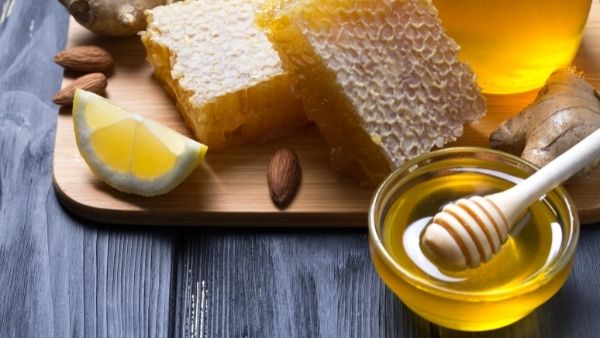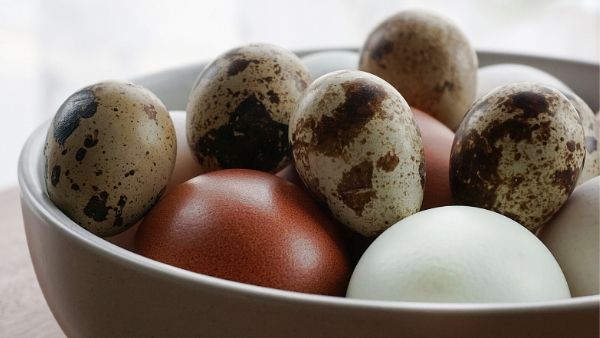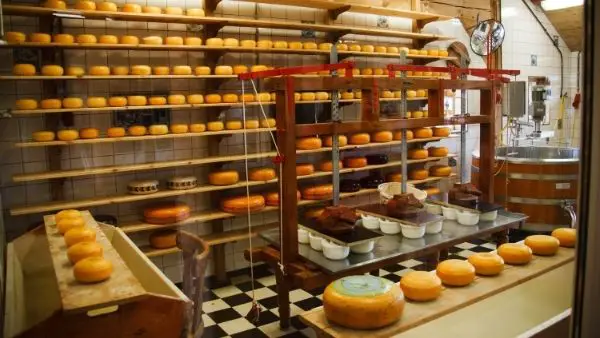Honey bee farming is practiced across the country, by farmers and hobbyists, on large rural properties, and even in smaller city back yards. Many hobby beekeepers use the honey their bees produce themselves or share it with friends, while some produce enough honey to set up stands at farmer’s markets or even sell to local stores. But is farming honey bees actually profitable?
Profiting from honey bee farming takes dedication, as it can take some time for the products’ sales to offset the initial equipment costs. But, with good hive management and conditions, most farmers can offset the initial costs after two or three years and bring in increasing profit margins thereafter.
To understand whether you could make a profit keeping honey bees, you need to understand the various expenses and factors that go into bee farming.
Typical Honey Bee Farming Expenses and Setup
Bee farming can be done on any scale imaginable—from large fields of hives to just a few in someone’s back yard.
Bee farmers can provide multiple products: some sell the bees they farm, while others sell only the honey, beeswax, and other hive products that the bees produce. Whatever type of honey bee farm you are interested in operating, you will need a few basics to begin:
The Right Environment for Honey Bees
Remember that honey bees don’t just produce honey from thin air. They need the proper environment full of the proper plants to pollinate.
A sunny spot near flowers, grass, trees, herbs, and weeds (or some of those) will keep your bees happy and give them plenty of food and material. If you don’t have many plants near the place where you plan to put your hive, you may have to invest in a small garden or some other vegetation for the area. This will vary in costs depending on the number and types of plants you want to add.
In addition to this, if you plan to have a large number of hives and only have a small amount of property, you may need to consider purchasing more land as your bee colony grows. The cost of this will depend on your location and space needs.
Honey Bee Hives
Before you purchase your first bees, you will need to have a habitat ready for them, their hive. There are various types of honey bee hives available for purchase, such as Skep, Top Bar, Langstroth, and Warre Hives.
Hives can be either rented or purchased:
A beginner bee farmer can set up their first hive and purchase the necessary basic equipment needed for less than $200 if they rent a hive or a little over $300 if they purchase the hive. After that it’s just the cost of each new hive, depending on the number of hives you add to your farm.
| Hive Type | Advantages | Disadvantages |
|---|---|---|
| Langstroth | Versatile and Modular | Lifting heavy boxes to get to lower compartments |
| Top Bar | Ease of access to honey combs No heavy lifting | Natural combs are compatible with centrifuges |
| Warre | Mimics natural hive | Not readily available |
| Skep | Awesome classic look | Mostly illegal to use because of inability to do inspections on the hive |
Other Beekeeping Equipment
While not absolutely necessary, there are a few other tools that are very helpful to beekeepers, some of which also reduce the risk of stings.
A beekeeping smoker, which usually costs around $20 to $40, releases smoke that temporarily covers up the scent of the pheromones that the bees release to communicate with each other, which will confuse them and result in a peaceful environment in the hive so that the beekeeper can work without fear of being stung. Check prices here on Amazon.com.
Another essential tool is protective clothing such as a suit designed explicitly for beekeeping. Depending on if you want a full protective bee suit or just the protective veil to shield your face, this protective gear can range in price from $20 to $160. Check prices here on Amazon.com.
As your hive grows, you may want to make honey collection easier by purchasing some equipment to extract the honey from the hive, such as a honey extractor, which ranges in price from $250 to $600. Check prices here on Amazon.com.
The Honey Bees
To get your bees, you will need to purchase them in one of two ways: a package or a nucleus (commonly called a “nuc”).
- A package is a large number of bees, usually around three pounds which equates to around 10,000 to 12,000 bees, with a queen stored separately. Once you have purchased a package of bees, they need to be moved directly into a hive. These bees are not all related and the queen usually is not the mother of them. Therefore it takes a longer period of time for them to become established.
- A nuc is a small colony of honeycomb in which bees are residing, have laid eggs and larvae, and are working on developing the comb. There is also a “loose” queen bee working on reproducing to grow the colony. The nuc comes in a small box, and unlike a package, the bees in a nuc can be left in this box for some time until you are ready to move them into the hive. A nuc is also advantageous because the colony is already established and does not have to take the extra time to become established in the new hive.
A honey bee package typically ranges from $80 to $125, whereas a nuc of honey bees costs anywhere from $100 to $150. Check Sweetmountainhoney.com for pricing and availability.
Other Associated Honey Bee Farming Costs
It is also necessary to consider the added costs associated with commercially selling either honey/hive products or the bees themselves.
There may be an added cost for extracting the honey and honeycomb if extra equipment is needed. As mentioned above, commercial-grade honey extractors are relatively pricey, usually between $250 and $600 each.
There will be a cost for the jars or containers you sell the honey in. Prices for honey storage and containers will vary widely depending on your selection. However, when purchased in bulk, traditional honey jars tend to range in price from 50 cents to $1 each. These jars hold approximately a pound of honey each. Thus, you can probably plan to subtract this amount from each pound of honey you sell to help pay for the packaging. Check this page on Amazon.com for the many different types available.
What Sales Can You Make from Honey Bee Farming?
Now that we have considered the costs of beekeeping, let’s consider the profits possible for a honey bee farmer.
As previously mentioned, there are several products that a honey bee farmer might sell: honey, honeycomb, other hive products, and the bees themselves.
Sales to Expect from Honey
One honey bee hive typically produces somewhere between 25 and 60 pounds of honey in a year. Some can produce significantly more in very productive years, as much as 200 pounds.
As you may have guessed, honey does not tend to be a costly commodity as it is so widely available at low prices in grocery stores. However, many people prize local honey for its depths and varieties of flavors, as well as its hypoallergenic qualities (honey produced in the area in which you live can help you become resistant to the seasonal allergens in your area.)
For this reason, local honey can often be sold for higher prices locally, at places such as farmer’s markets. As you build a market for your honey locally, you will be able to raise your prices. Honey prices vary widely for this reason: The average price for a pound of honey is just under $6, but some beekeepers can sell their honey at significantly higher prices, sometimes around $14 a pound or more.
Thus, the earnings from honey produced by your hive can vary significantly each year, depending on the sale price and the productivity of the hive that year. For example:
- A hive producing only 25 pounds of honey in a year, sold at $6 a pound, would earn you $150 in a year on honey sales.
- A hive producing 60 pounds of honey in a year, sold at $14 a pound, would earn you $840 in a year on honey.
- If your hive produced 200 pounds of honey in an incredibly productive year, and you sold that honey all at $14 a pound, you would earn $2800 on honey. Of course, this is by far the high end.
Note: For all of these amounts, you need to keep in mind labor time and the cost of packaging.
Sales to Expect from Honeycomb
Honeycomb sells at much higher prices (around $20 a pound or more) than liquid honey. Still, to sell your honeycomb rather than extracting the honey, you are removing a portion of your colony’s habitat and causing the bees extra effort and energy to rebuild it.
Bees eat a large amount of honey to gain energy to produce honeycomb, so you will have to weigh the value of removing parts of the comb and ending up with less liquid honey in the next season as the bees rebuild.
Sales to Expect from Honey Bees
The typical sale price of bees has been mentioned above—$80-$125 for a package, and $100-150 for a nuc. You will gain more bees each year as long as your conditions are right, and so, unless you are working to grow your hives very rapidly, you may want to sell some bees periodically.
An average hive will have around 30,000 bees but can range from 10,000 to 60,000. Three pounds of bees, the size of a typical package of bees, is around 12,000 bees. Depending on your bees’ health and growth, you could potentially sell one package or nuc of bees from each hive each year.
Profit Margins of Honey Bee Farming
The very basic equipment for setting up one hive is, as mentioned before, between $200 and $300. Of course, you will have to factor in the potential extra expenses that may arise, as well as all of the time that will go into setting up your hives, transporting or shipping equipment, etc.
In your first year, earnings on honey could be as low as $150 per hive, even if you sell all of the honey produced if your bees do not make much honey and you sell at the average price.
If this is the case, then it could take two years to earn back the initial investment costs by selling honey, even if you extract and sell all the honey that the bees produce. Factoring in the potential extra equipment costs as well as the costs of packaging such as jars for your honey, it could be closer to three or four years before you break even.
How to Increase Profit Margins with Honey Bee Farming
Of course, the chance of earning a more considerable profit grows if you have more hives. The more honey you produce, the more quickly you will be able to pay off the equipment costs, and the more bees you will have to sell (as long as there is a full market for both in your area.)
That said, extracting honey, honeycomb, and bees from hives is very labor-intensive work (especially without expensive equipment like honey extractors), and you may have to hire help or spend extensive hours working on the hives yourself if you have too many.
The longer you keep the bees—if they are kept healthy and in good condition—the more possibility there will be for greater and greater profits each year, for a few reasons:
- As your hives grow stronger and healthier, they will produce more and more bees, and you will be able to begin selling packages and nucs of bees to other beekeepers each year. Your bee colony will grow exponentially in the right conditions, and you will have to choose between adding more and more hives or selling more and more bees, either of which should help grow your profit margin.
- As your colony grows and continues to work, they will also produce larger and larger honeycombs each year, and you will be able to extract parts of the valuable honeycomb for sale without causing harm to the colony or sapping too much of the honey from your hives.
- As more bees fill your hives, they will produce more and more honey each year. The more honey they produce, the more honey you will be able to sell.
- The longer you are in business and selling honey in the area, the more you will be able to establish your business and local branding and market presence. If you produce a good product at a fair price and there is a market for local honey, you will be able to sell more each year and probably raise your prices as well.
Profits to Expect from a Mature Honey Bee Farm
With consistent work over time, local marketing savvy, and the growth of your honey bee colony, you should be able to see profits after two to four years.

A mature hive of average health could easily produce 60 pounds of honey in a year, and you could very safely remove 3-4 pounds of honeycomb from the hive as well. If healthy, you could also potentially sell a nuc of bees from the hive each year.
If you are selling your honey locally at the moderate rate of $10 a pound, your honeycomb at $20 a pound, and each nuc of bees for $150, then you would earn $830 per hive each year, minus any additional costs such as labor and packaging. At this rate, a small lot of ten hives would earn $8,300 in sales. Of course, the profits could be significantly more depending on honey yield and sales prices.
To get to this point of establishing a healthy bee colony as well as a healthy place in the local honey and bee market takes consistent, hard work and careful attention to your bees and their conditions, but, with this work, you could begin to make a significant profit off of just a few hives.
Other Ways to Boost Profits from Your Honey Bee Farm
Many honey bee farmers find other ways to boost their profits by producing various specialized and branded goods with their honey that can be sold for higher profit margins.
The costs associated with producing these products will vary widely depending on the type of products you make, how you choose to develop them, the other ingredients and packaging you use, and the help you hire or don’t hire to help you produce the product.
Some ideas for other products and services you could develop to increase your profits include:
- Lip balms (commonly sold for between $4 and $6)
- Hand creams (commonly sold for between $10 and $20)
- Body butter (commonly sold for between $30 and $40)
- Facewashes and other beauty products
- Beeswax candles (commonly sold for between $5 and $20 each, depending on candle size)
- Raw pollen (which can sell for around $5 an ounce)
- Farm tours and honey tastings (will vary depending on your preferences and costs)
These products or services, or others like them, will probably allow for a much larger markup compared to production cost compared to your raw products. They are also ways to get more people interested in your local business—and thus, in your honey.
In Summary
In conclusion, honey bee farming is not a quick or easy way to make a profit. However, there is a steady market for the products it produces: honey, honeycomb, honey bees, and various related products.
With steady work and proper conditions, you should be able to start turning a profit on your hives in two or three years, and, as your colony continues to grow and you find a place in your local market, that profit will continue to grow as well.







